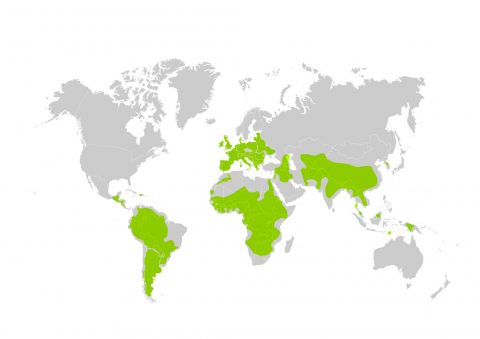
Rivers and Lakes
Rivers are the arteries of the landscape that connect and sustain diverse freshwater wetlands including lakes, inland deltas, swamps and marshes. Safeguarding and restoring healthy, resilient freshwater systems is key to achieving global goals for food, water, energy, peace and climate change.
We want to catalyse investment to safeguard and restore rivers, lakes and their accompanying wetlands and to provide water security for people and nature, climate resilience, and sustainable and peaceful landscapes.
The value of rivers and lakes
They host some of the world’s most charismatic species, including hippopotamuses, crocodiles, jaguars, manatees, beavers and eels. Connecting land and sea, they enable fish and waterbird migration as well as storing and regulating water.
They are a source of food and the basis of livelihoods for hundreds of millions of fishes, herders and farmers working in flood-based agriculture. These wetlands provide water for domestic, agricultural and industrial use. In arid regions such as the Sahel, freshwater wetlands are vital blue lifelines underpinning peaceful and stable societies.
Threats and challenges
Most rivers in the world today are dammed and cut off from their natural floodplains. Only a third still flow freely. The fragmentation and loss of rivers, lakes and floodplains is a result of ill-advised dams, irrigation schemes and other development projects that abstract, or remove water, changing the volume, speed and quality of water that flows through the ecosystem. Such changes can have disastrous consequences up and downstream.
Some 30% of freshwater wetlands have been diked and drained in half a century leading to dried up rivers and the cessation of fish migration. As a result, freshwater biodiversity is in free fall, with populations down 80% since 1970.
Climate change is making water availability even more uncertain. Increasingly, the drive to reduce carbon emissions is accelerating hard infrastructure development for flood defence and renewable power. Perversely these actions risk further degrading wetlands and impacting water availability for all. Those who depend on the wetlands are among the most marginalised in society. Wetland loss is reducing their resilience, compounding tension, displacement and conflict, leading to fragility.
Enablers to scaling up the safeguarding and restoration of rivers and lakes
We see the opportunities of increased attention on water as the ‘master variable’ linking biodiversity and climate change crises. Global frameworks and initiatives from the UN Sustainable Development Goals to the Decade on Ecosystem Restoration are setting wetland targets as part of development, climate change and restoration goals.
Strengthening civil-society networks to advocate for freshwater wetlands to be part of socio-economic and development will help make the case for freer flowing rivers as cost-effective solutions to flooding, drought and food security for climate-affected communities. This is part of strengthening and diversifying multi-stakeholder participation in water governance and stewardship from basin to wetland landscape scale.
There is increasing interest from the agriculture, hydropower and extractive industries in responsible business practice. This momentum can help mobilise nature-based solutions at landscape scale, for example, through water stewardship and carbon investment, as a means to build resilience in watersheds.
Where we work

The pressures on freshwater wetlands are regional and global but can only be solved locally, at the basin and ecosystem levels. We focus our work to scale up freshwater wetland conservation and restoration in river and lake landscapes across some of the most charismatic and threatened wetland systems in the world.
These include the Sahelian floodplain wetlands, Parana-Paraguay and Ganges rivers and wetlands, Great Lakes Region of the Nile Basin, the high altitude wetlands of the Andes and Himalayas and freshwater rivers and wetlands of the Mediterranean Basin. Building on our track record and achievements in these places we seek to influence and enable global and regional socio-economic development actors such as the regional development banks and national governments through their commitments to implementing Agenda 2030 and NDCs.
Partnerships and platforms for change
- We have established a core partnership to drive forward the vision of “Blue Lifelines for a Secure Sahel” (BLISS), including CARE Netherlands, International Alert and the International Water Management Institute.
- We collaborate with the African Union Great Green Wall Initiative and connect to many networks and partners, including civil society networks and organisations of Partners for Resilience.
- We are an active partner in the Global Resilience Partnership, connecting strongly on mobilising systems approaches and sharing best practice approaches to tackle water and food security and the intersect with human security.
- In each region, we work in close collaboration with river basin organisations, government bodies researchers and knowledge organisations.
